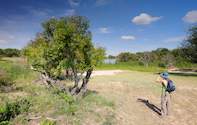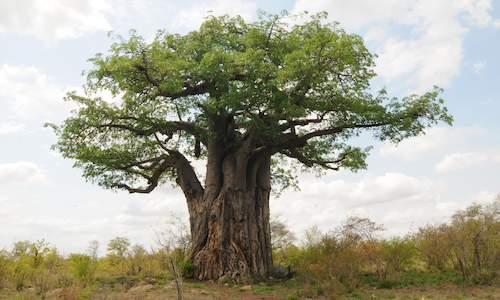
Countries tackling food insecurity and climate change adaptation can greatly benefit from agroforestry - integrating fleshy plants and trees into their farming systems, environmental specialists say. Sub-Saharan Africa has a history of food insecurity brought on by meagre rains, land degradation, declining soil fertility and bad management of resources, among other factors.
'How do we, in a world of more than six billion people, rising to perhaps over nine billion, feed everyone while simultaneously securing the ecosystem services such as forests and wetlands that underpin agriculture, and indeed life itself in the first place?" Achim Steiner, Executive Director of the UN Environmental Programme (UNEP), posited at the second World Congress on Agroforestry in Nairobi. "We can empower people - not to wait for others to do something for them - but to take the initiative, one tree at a time," Steiner said.
"Trees are one of nature's most ingenious answers to many of our problems.Agroforestry helps supply fodder, fruit and nuts as well as trees and shrubs that produce gums, resins and valuable medicines.Steiner said agroforestry may have many roles to play in the new landscape of rewarding countries for their natural or nature-based services."Firstly it offers the potential for maximizing sustainable food production in the zones surrounding natural forests while also boosting biodiversity and other 'natural infrastructure'.
'Secondly, it offers an opportunity for timber production and thus alternative livelihoods to meet perhaps a supply gap that may emerge under a fully-fledged REDD [Reduced Emissions from Deforestation and forest Degradation] regime."Thirdly these agroforestry areas can also potentially secure flows from carbon finance in their own right."
Better REDD
REDD is a strategy to help local communities conserve forests, including funding these efforts through governments and market-based mechanisms, such as trading the carbon stored by forests as credits to greenhouse gas-emitting industries.Trees such as the Faidherbia albida, a leguminous acacia-like tree, are especially useful."Faidherbia goes dormant at the beginning of the rains and deposits abundant quantities of organic fertilizer on to the food crops to provide nutrients and increase yields, totally free of charge," said Dennis Garrity, World Agroforestry Centre (ICRAF) Director-General.
"They are fertilizer factories in the food crop fields."The leaves and pods of the Faidherbia, which are adapted to a wide array of climates and soils from deserts to humid tropics, provide fodder in the dry season too.Garrity said: "The much higher food prices... have exacerbated the pain of hunger in hundreds of millions of households. The standard solutions just aren't working.
The question is, what are we as agroforestry scientists going to do about it? What are we going to contribute to sustainable solutions?"With shrinking forests, he said, "the rising demand for tree products will have to be met from farm-grown sources. Clearly, agroforestry science has much to offer in overcoming the food security challenges in Africa, and elsewhere in the world."
Tree Cover
According to a 24 August report by ICRAF, "tree cover is a common feature on agricultural land", and represents over one billion hectares of land."Agroforestry, if defined by tree cover of greater than 10 percent on agricultural land, is widespread, found on 46 percent of all agricultural land area globally, and affecting 30 percent of rural populations," stated the report.
Namanga Ngongi, president of the Alliance for a Green Revolution in Africa (AGRA), said: "Seventy-five percent of Africa's farm lands are degraded, and deforestation is taking place at four times the global average, destroying 1 percent of our forests every year."Agroforestry alone could remove 50 billion tonnes of carbon dioxide from the atmosphere over the next 50 years, meeting about a third of the world's total carbon reduction challenge, according to ICRAF studies.
Carbon Payback
Nobel Laureate Wangari Maathai suggested that subsistence farmers might be more willing to invest in farming trees if there were carbon credit revenue guarantees.UNEP recently launched a Carbon Benefits Project in the catchments of Lake Victoria, Niger, Nigeria and China, which seeks to find a standardized way of assessing how much carbon is actually locked away in vegetation and in soils under different land-management regimes.This has been a major challenge for African smallholders seeking to access the carbon market. Preliminary findings are expected within 18 months.
According to Steiner, economic incentives are required to reverse deforestation and forest degradation."...Simply locking away forests to secure their carbon as if they are the Queen's jewels, or putting up the modern equivalent of a Berlin Wall between forests and people, is almost certainly folly and almost certainly a recipe for disaster," he said.

 African trees guide to tree species in the Kruger National Park and South Africa. This Africa Tree Guide includes descriptive information, i...
African trees guide to tree species in the Kruger National Park and South Africa. This Africa Tree Guide includes descriptive information, i...